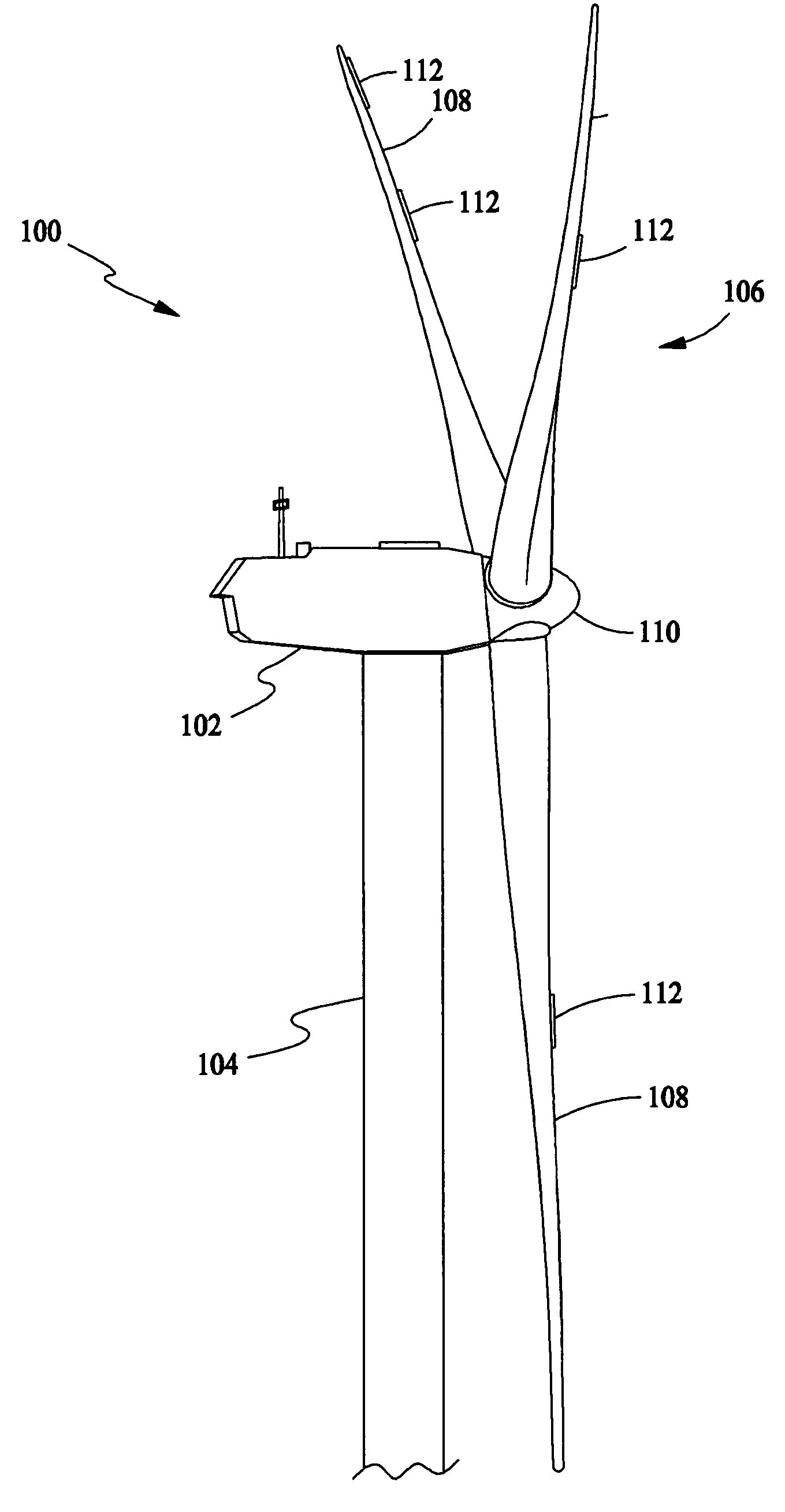Methods and apparatus for rotor blade ice detection
a technology of rotor blades and apparatuses, applied in wind turbines, wind turbines with parallel air flow, liquid fuel engine components, etc., can solve the problems of increased system load and/or power output, reduced lifting capability, and reduced performance, so as to reduce performance and reduce lifting capacity. , the effect of reducing the performance of the rotor blad
- Summary
- Abstract
- Description
- Claims
- Application Information
AI Technical Summary
Benefits of technology
Problems solved by technology
Method used
Image
Examples
Embodiment Construction
[0024]As used herein, a physical or meteorological parameter is “monitored” when a sensor is used to determine its present value. The broader term “monitored” is used rather than the narrower term “measured” to emphasize that the sensor may but need not necessarily provide a direct measurement of the parameter being monitored. For example, an anemometer used as a meteorological sensor may generate an analog signal relating to the present wind speed, but the analog signal is not an actual measurement of the wind speed. Nevertheless, this signal or a digital representation of the signal can be used to determine wind speed, or a design choice may be made to use the signal, its digital representation, or its representation with further processing as a proxy for wind speed.
[0025]Also as used herein, the term “meteorological sensor” refers to a sensor of a meteorological condition. A non-exhaustive list of meteorological conditions include, for example, air pressure, wind speed and direct...
PUM
| Property | Measurement | Unit |
|---|---|---|
| mass | aaaaa | aaaaa |
| physical characteristics | aaaaa | aaaaa |
| rotor speed | aaaaa | aaaaa |
Abstract
Description
Claims
Application Information
 Login to View More
Login to View More - R&D
- Intellectual Property
- Life Sciences
- Materials
- Tech Scout
- Unparalleled Data Quality
- Higher Quality Content
- 60% Fewer Hallucinations
Browse by: Latest US Patents, China's latest patents, Technical Efficacy Thesaurus, Application Domain, Technology Topic, Popular Technical Reports.
© 2025 PatSnap. All rights reserved.Legal|Privacy policy|Modern Slavery Act Transparency Statement|Sitemap|About US| Contact US: help@patsnap.com



